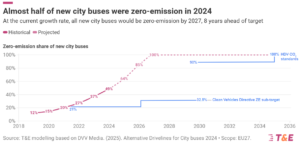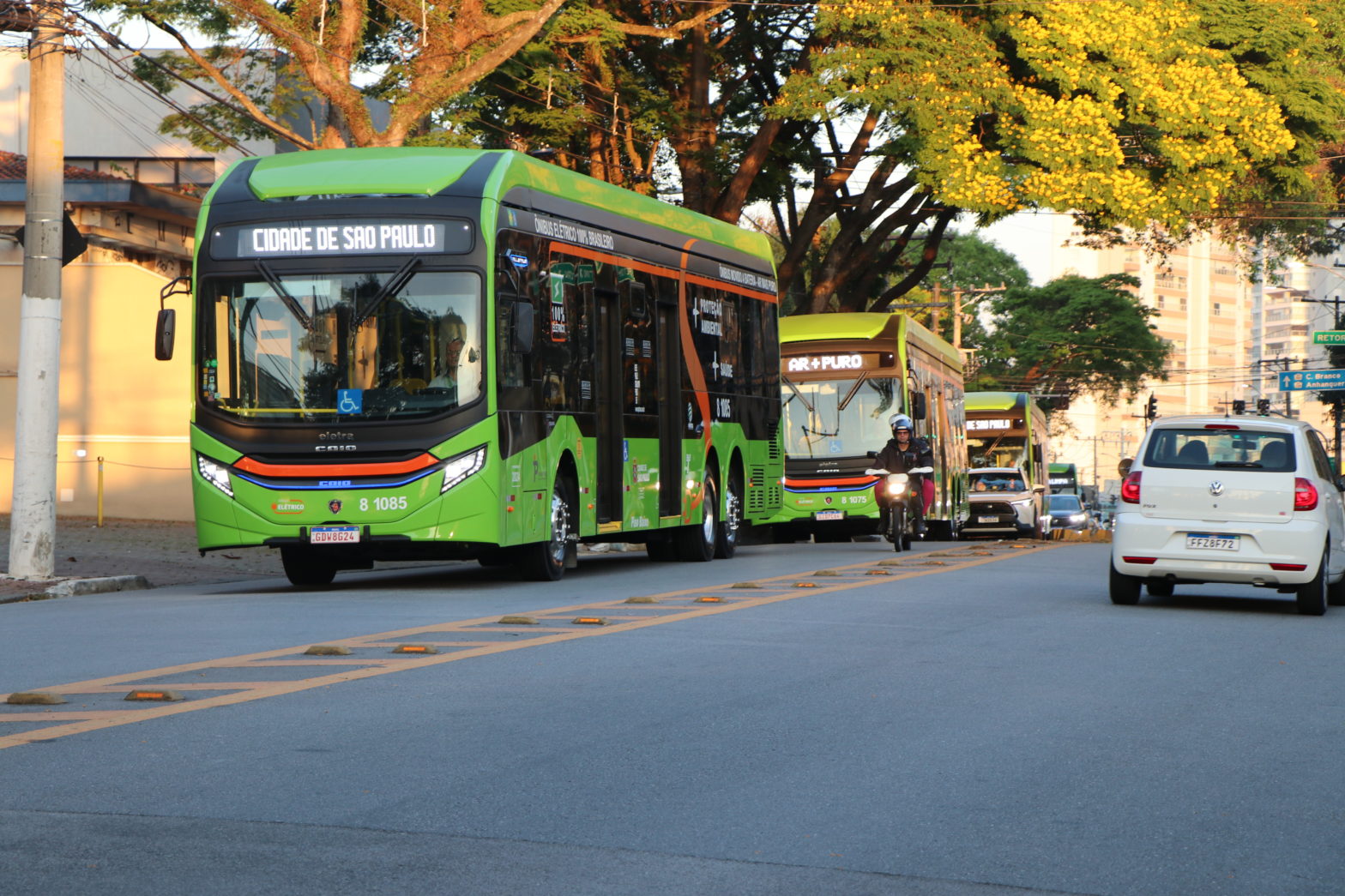
Netherlands, Finland, and Iceland lead EU’s electric bus boom
10 March 2025
by William Thorpe
The Netherlands, Finland, and Iceland have fully embraced electric public transport, with 100 percent of their new city buses in 2024 being battery-electric.
Across the EU, nearly half (49 percent) of new city buses were zero-emission, (ZE) according to Transport & Environment (T&E), marking a major shift away from diesel.
Spain led among larger markets with a 57 percent zero-emission share, followed closely by the UK (56 percent) and Italy (44 percent). France and Germany lagged, with only a third of their new buses being electric or hydrogen-powered.
“The days of diesel buses are numbered, but also thanks to city-level policies such as zero-emission zones and fleet targets,” said Max Molliere, E-mobility Data Analyst at T&E in an opinion piece.
“As a result, the city bus market is shifting much faster to zero-emission than what is required under the EU’s Clean Vehicle Directive and the CO2 standards for trucks and buses. At this growth rate, city buses are on track to reach fully ZE sales by 2027,” they said.

Despite the overall surge, the T&E data reveals that some countries are falling behind. Austria, Czechia, Hungary, Estonia, Slovakia, and Croatia have been slow to adopt zero-emission buses, though Estonia made a dramatic shift last year. After introducing electric buses in Tallinn in April, 84 percent of Estonia’s new city buses were battery-electric by the end of 2024.
The push for hydrogen buses is also gaining traction, with fuel cell models doubling their market share to 3 percent in 2024. However, battery-electric buses remain dominant, making up 46 percent of new sales.
Europe first
Molliere also called for smarter government purchasing policies.
“New public procurement criteria can promote the uptake of made-in Europe ZE city buses,” they said. “Tenders should focus on battery-electric and fuel cell buses, away from gas and hybrid technologies; and on vehicles produced in Europe, to ensure that public money is spent supporting European jobs and manufacturing.”
Hybrid city buses, which once made up 20 percent of EU sales, dropped to 16 percent in 2024. Gas-powered buses also remained at a low 14 percent, reinforcing the shift to fully electric fleets.
While some countries are still catching up, Molliere is optimistic about the EU’s direction.
“If, as we predict, 2025 marks the turning point where more than half of new city buses are zero-emission, we should see the transition accelerate accordingly in trailing countries.”
Image: Roland Magnusson | Dreamstime.com









